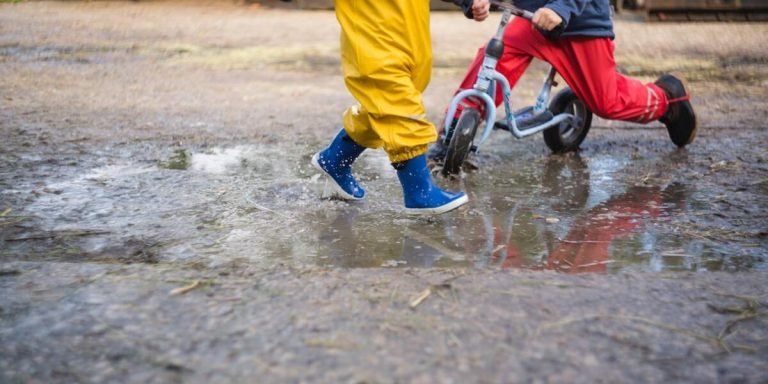School Field Trip: A Key to Enhancing Real-World Learning Experience in Children
In the journey of a child’s education, school field trips have emerged as a fundamental component to foster experiential learning. These outings serve more than just being away from regular classroom settings; they offer students the opportunity for hands-on experience and interface with real-world scenarios that can’t be replicated within four walls. They expand their horizons beyond textbooks while transmitting vital life skills.
Complementing traditional pedagogical approaches, “Activity Based Learning” leverages such experiences in enhancing cognitive development in children. By bridging the gap between theoretical knowledge and practical usage, this interactive approach facilitates deeper understanding by stimulating multiple senses simultaneously. School field trips perfectly align with this strategy by offering an immersive environment where learning sprouts naturally.
Did you know?
Did you know that according to The Journal of Educational Research, children who participate in school field trips display improved critical thinking skills and retain more information compared to their classroom-only counterparts?
Leveraging School Field Trips for Enhanced Activity-Based Learning
Leveraging school field trips can incredibly boost the effectiveness of activity-based learning. In this tech-savvy 2023, educators have started harnessing technology to augment students’ experiences during their educational excursions better than ever before. The integration of digital resources into these events has revolutionized how pupils absorb and retain knowledge.
With augmented reality (AR) and virtual reality (VR), children’s engagement goes beyond passive observation, transforming into an immersive interactive experience. For example, museums often offer apps that provide AR tours where kids use a device’s camera to explore exhibits with additional information overlaid on what they see physically – making each visit more informative yet fun-filled.
Moreover, platforms like Google Earth VR allow students who are unable for any reason to venture out in nature or go abroad; they can virtually walk along the Great Wall of China or dive under the Great Barrier Reef right from their classroom! This not only broadens horizons within education but also ensures inclusivity across diverse student groups by eliminating barriers such as cost restriction and physical limitations.
Integrating wearable technologies further deepens learners’ ties with acquired knowledge through tangible interactions too – smartwatches could monitor heart rates while climbing hills on outdoor adventures or haptic gloves might relay texture sense when touching recreated historical artifacts at themed parks.
Integrating Curriculum with Real-World Experiences
Activity-based learning is at the forefront of this shift – changing traditional paper-and-pencil tasks to active engagement activities. School field trips provide an ideal platform for facilitating these types of immersive educational experiences.
Innovative tech tools have made it possible to transform ordinary tours into engaging activity-based learning sessions by leveraging augmented reality (AR) or virtual reality (VR) technologies during school field trips. These cutting-edge initiatives bridge the gap between classroom study and its tangible applications in everyday life.
For instance, on a visit to a historical monument or museum, AR apps could be used not just for exploring locations visually but also interacting with exhibits virtually while receiving contextual information available through audio guides provided within these apps. This provides learners an opportunity to interact directly with what they’re studying – giving them memorable insights deeper than textbook knowledge.
Meanwhile, cloud technology facilitates collaboration among students as they can share their observations and thoughts about various aspects encountered during their journey right then instead of waiting till later causing dilution due to memory lapses thereby enhancing retention capabilities greatly.
Maximizing Student Engagement Through Interactive Exploration
School field trips offer more than just a break from the regular classroom routine. They can enrich children’s learning experiences through practical, hands-on exploration in various environments. However, to fully harness their potential for enhanced activity-based learning, education providers must adopt innovative strategies.
Firstly, planning is crucial when leveraging school field trips towards improved student engagement. Teachers need not just sort logistics but also carefully align the outings with relevant curricular targets and objectives of 2023’s educational standards.
Next comes technology integration: an essential aspect that transforms traditional excursions into immersive learning expeditions. Augmented Reality (AR) or Virtual Reality (VR) headsets are perfect examples of how this digital wave has swept into our classrooms – figuratively and literally! Pupils wearing AR glasses on a museum tour could connect what they see directly back to texts studied during lessons as information overlays artwork or artifacts – making abstract concepts suddenly become visible!
Furthermore, incorporating mobile applications designed for outdoor explorations helps measure how much students actually learn from these journeys outside their usual environment. Such apps encourage learners to document observations using photos or notes stored alongside GPS coordinates – effectively integrating disciplines like geography and science while honing critical thinking capabilities.
The Role of Outdoor Adventures in Promoting Educational Outcomes
Outdoor adventures like school field trips are playing a pivotal role in promoting educational outcomes, especially when technology is efficiently integrated with the process. In our present year 2023, as we move ever more into embracing digital tools for education, it’s crucial that we don’t lose sight of Activity Based Learning (ABL). Combining these elements can create an effective learning environment bringing out better understanding and results.
A school field trip isn’t just about leaving classrooms behind; it facilitates exposure to real-world experiences from which students can gather functional knowledge. These ventures bring abstract classroom teachings alive through practical examples and applications. The integration of technology during such expeditions enhances this further by enabling pupils to document their observations digitally or research additional information on-site.
The impact of ABL via outdoor adventures gains even greater import in shaping youngsters’ perspectives towards traditional subjects too – transforming what was once seen as tedious math problems or complex science concepts into exciting puzzles waiting to be solved. Integrating tech tools within these activities not only fosters collaboration but also encourages problem-solving skills among children thereby paving the way for a rewarding pedagogical journey.
Fostering Critical Thinking and Problem-Solving Skills on Excursions
As education continues to evolve, the integration of technology and activity-based learning offers endless potential. One such example where this exciting blend can be seen is during school field trips.
School field trips are no longer mere sightseeing excursions; they have evolved into experiences that foster critical thinking and problem-solving skills among students. Combining physical activities with digital tools like augmented reality games or geocaching apps allows educators to create a rich educational environment outside the classroom context in 2023.
In an era dominated by screens, outdoor adventures can provide much-needed balance for children. The natural settings draw them out of their comfort zones and challenge them mentally as well as physically. For instance, treasure hunts integrated with GPS tracking stimulate strategic planning while experiencing nature’s wonders firsthand.
Problem-solving activities introduced on these outings also promote teamwork among young learners besides enhancing individual cognitive abilities. Pupils learn how to work cohesively within groups using both traditional methods – deciphering maps, following clues – alongside modern technological know-hows like drone navigation or QR code scans.
Furthermore, utilizing interactive e-learning platforms outdoors provides hands-on experience which supplements theoretical knowledge acquired from textbooks effectively bringing concepts alive in real-world contexts right before their eyes! Whether it’s understanding ecosystems via virtual tours downloaded onto tablets fighting against environmental hazards through simulation games!
Encouraging Observational Learning and Inquiry-Based Discussions
While technology continues to reshape education, we must not overlook the timeless value of outdoor adventures in promoting educational outcomes. An aspect consistently proving beneficial is the school field trip – an excursion that merges education with practical experiences.
Outdoor activities encourage observational learning, a process where children acquire new skills or knowledge by watching others. In today’s digital age, think of it like “offline browsing” fostering insight and patience while sating their curiosity about real-world phenomena.
Incorporate tech gadgets during these excursions adds another layer to this constructive experience. Tools like Digital GPS trackers can enhance orienteering sessions creating exciting treasure hunts using coordinates; lightweight drones provide aerial views of landscapes broadening geographical understanding; whereas portable microscopes allow scrutiny of unfamiliar flora or fauna enhancing biological awareness.
A typical day on a school field trip could include observing local wildlife behavior before documenting findings on cloud-based platforms for later classroom discussions giving ‘homework’ little more charm!
Likewise, let’s consider Inquiry-based discussions as part-and-parcel to such expeditions – making them even more advantageous than traditional rote learning methods.
This technique involves posing questions that make children analyze what they’ve seen, encouraging higher-order thinking abilities crucial in 2023 progress towards activity based learning (ABL).
For instance: why do certain plants grow near water bodies? How does construction affect animal habitats? What role does weather play in shaping our surroundings?
Bridging Classroom Teaching with Hands-On Experiences
In the realm of childhood education, school field trips present brilliant opportunities for bridging classroom teaching with hands-on experiences. These exciting excursions embody a vital element known as Activity-Based Learning (ABL), championed by educators globally in 2023. By merging theoretical concepts taught within the four walls of a classroom to their practical applications in real world scenarios, learners gain an enriched understanding and heightened interest in various subjects.
Today’s digital era offers ample technological tools that can significantly augment these externally located learning sessions. Technology Integration is no longer just limited to using smart boards or relying on online resources within classrooms; it has permeated into even outdoor educational activities such as school field trips. When effectively utilized, tech-powered instruments not only supplement traditional learning methods but also open doors to immersive avenues that were once unthinkable.
For instance, Augmented Reality (AR) devices allow pupils exploring historical monuments or museums during their school trip to visualize events from yesteryears right before their eyes! Simultaneously Virtual Reality (VR) headsets can transport students undertaking nature expeditions into ecosystems across different continents without leaving their location- bringing abstract biology chapters alive vividly.
These tech-infused experiences foster deeper engagement and curiosity among young minds towards diverse topics covered under curriculums today – leading us down the path where ‘learning becomes fun’ isn’t merely an aspirational phrase anymore but evolving into reality gradually.
Utilizing Nature Walks to Teach Environmental Science Concepts
Bridging scholastic learning with real-world insights is now of significant importance in the world of education. A compelling strategy to achieve this feat can be through school field trips, specifically nature walks which become an excellent platform for teaching environmental science concepts.
Imagine a classroom without walls, where learners have firsthand interaction with flora and fauna. Nature walks offer just that – a unique opportunity where underlying principles are learned experientially rather than theoretically from textbooks. In 2023, more educators should harness such hands-on experiences when guiding children toward understanding our environment better.
When it comes to activity-based learning like nature strolls for environmental education:
1) Students get closer encounters with diverse plants types or animal species they only knew about theoretically until then.
2) Making observations directly in their natural habitat enhances students’ knowledge base and fuels curiosity providing them intrinsic motivation towards lessons taught back at school.
Technology Integration here becomes even more exciting! Tools such as mobile apps could aid kids identify different plant or insect varieties during these nature hikes; not forgetting how photography interests might amass catalogs over time fueling further explorations!
Implementing Historical Site Visits to Deepen Understanding of Cultural Heritage
The implementation of school field trips to historical sites can significantly deepen a child’s understanding of cultural heritage. In the context of activity-based learning, these excursions bridge classroom teachings with hands-on experiences seamlessly.
To start, before embarking on a trip, educators stimulate students’ minds by giving them an overview of what they’re about to encounter. For instance, if the destination is an ancient civilization site or period-specific museum in 2023. Teachers would lay bare aspects such as its formation history and associated culture alongside key dates that stand out in the annals for their significance.
Next comes organizing pre-visit activities: quiz challenges could be set up around various facts associated with this era while engaging video documentaries or interactive online sessions are other viable options too – all designed keeping technology integration in education at core.
In conclusion; incorporating visits to historic locations promotes active participation leading learners beyond traditional borders enhancing real-world experience grounding simultaneously.
Conclusion
In conclusion, a school field trip isn’t merely an exciting break from the routine for children but rather represents an immersive platform that aids in shaping their understanding of the world beyond textbooks. It fosters natural curiosity and instills real-world knowledge—making education not just thought-provoking, but also engaging.
We encourage you to explore our website further as it is brimming with more insightful resources on child education. From practical teaching tips to emotional support guides for parents and educators alike—we strive to make your journey through childhood education smoother and fruitfully enriching! Your next click could hold key answers or open doors of new learning experiences.







